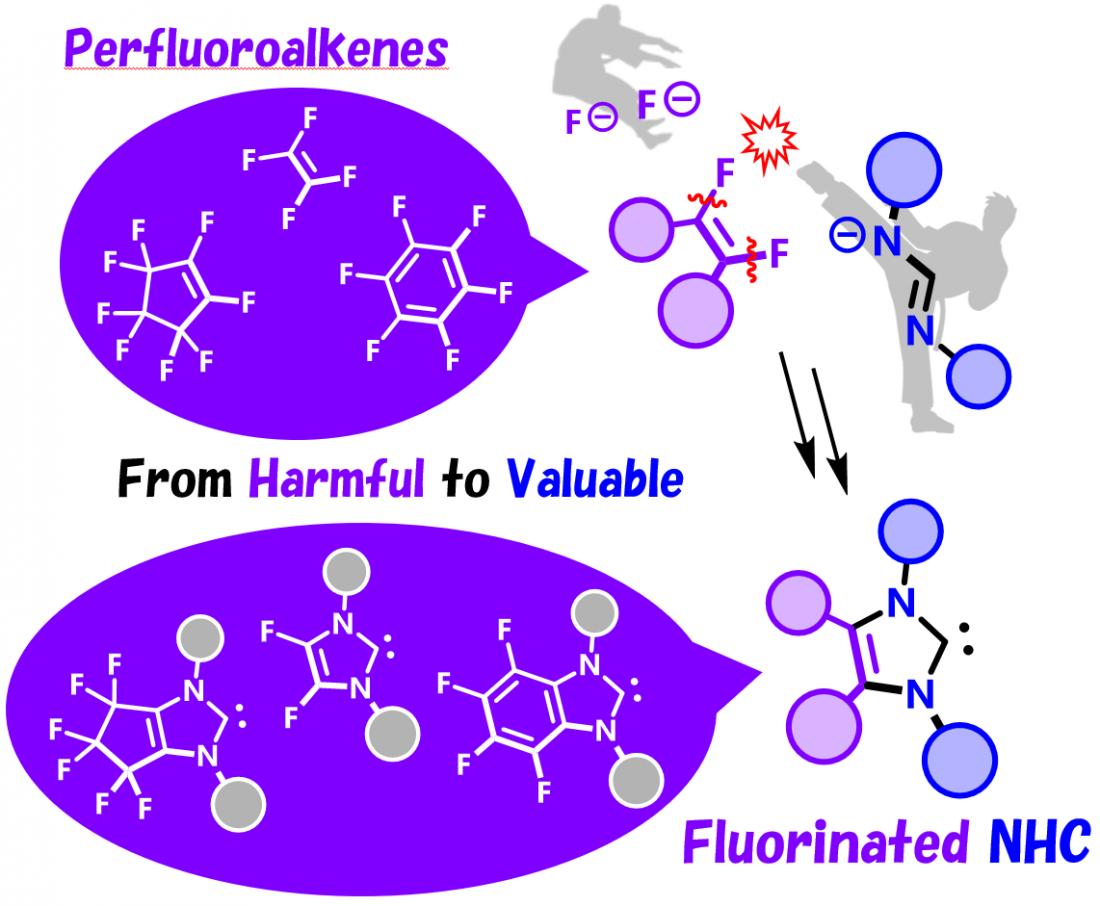Converting PFAS “forever chemicals” into valuable carbenes: The conversion was achieved by simply removing two fluorine atoms from 1,2-difluoroalkene derivatives
Osaka, Japan – Commonly known as “forever chemicals,” PFAS are notorious for persisting in the environment and in our bodies. Osaka Metropolitan University chemists may put an end to the “forever” life of PFAS with their simple yet innovative technique that converts these harmful substances into valuable compounds.
A research group led by Professor Masato Ohashi and Assistant Professor Kenichi Michigami of the Graduate School of Science at Osaka Metropolitan University has successfully synthesized ligands called fluorine-decorated N-heterocyclic carbenes (NHCs) from perfluoroalkenes, a type of PFAS (Perfluoroalkyl and Polyfluoroalkyl Substances). The NHCs developed in this study play significant roles in stabilizing unstable molecules as well as enhancing the performance of their ligated transition metal complexes.
The synthesis of fluorinated NHCs was achieved simply by removing two fluorine atoms from 1,2-difluoroalkene derivatives. Owing to the small size of fluorine atoms, the electron-accepting ability of the NHC ligand can be enhanced without substantially changing its steric properties.
“Our results enable the easy transformation of harmful PFAS into functional NHCs,” explained Dr. Michigami. “The versatile applications of fluorinated NHCs show potential advantages in various fields such as fluorine chemistry, organometallic chemistry, catalysis chemistry, and materials science.”
Their findings were published in the Journal of the American Chemical Society.
###
About OMU
Osaka Metropolitan University is the third largest public university in Japan, formed by a merger between Osaka City University and Osaka Prefecture University in 2022. OMU upholds "Convergence of Knowledge" through 11 undergraduate schools, a college, and 15 graduate schools. For more research news, visit https://www.omu.ac.jp/en/ or follow us on Twitter: @OsakaMetUniv_en, or Facebook.



